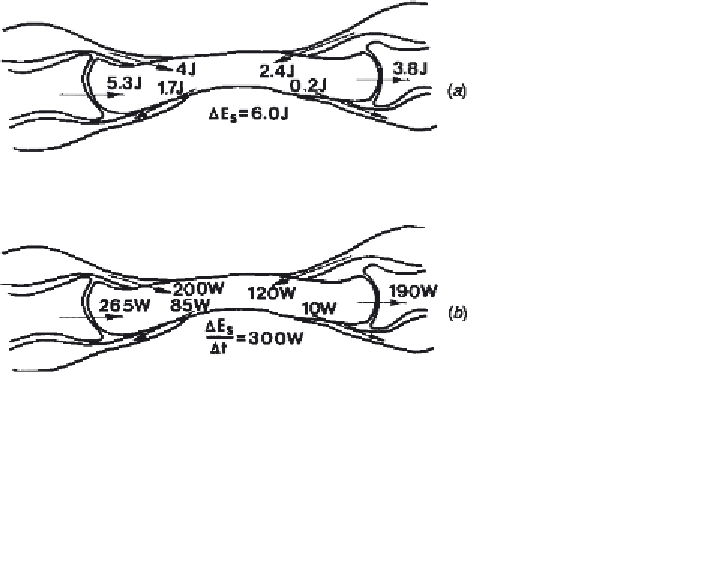Biomedical Engineering Reference
In-Depth Information
energy flows from body
A
to body
B
, we say that body
A
does work on body
B
; or muscle
A
can do work on segment
B
if energy flows from the muscle
to the segment.
6.0.2 Law of Conservation of Energy
At all points in the body at all instants in time, the law of conservation of
energy applies. For example, any body segment will change its energy only if
there is a flow of energy or out of any adjacent structure (tendons, ligaments,
or joint contact surfaces). Figure 6.1 depicts a segment that is in contact at the
proximal and distal ends and has four muscle attachments. In this situation,
there are six possible routes for energy flow. Figure 6.1
a
shows the work (in
joules) done at each of these points over a short period of time
t
.Thelaw
of conservation of energy states that the algebraic sum of all the energy flows
must equal the energy change of that segment. In the case shown,
E
s
=
4
+
2
.
4
6
.
0 J. Thus, if we are able to calculate each of
the individual energy flows at the six attachment points, we should be able to
confirm
E
s
through an independent analysis of mechanical energy of that
segment. The balance will not be perfect because of measurement errors and
because our link-segment model does not perfectly satisfy the assumptions
inherent in link-segment analyses. A second way to look at the energy balance
is through a
power balance
, which is shown in Figure 6.1
b
and effectively
looks at the rate of flow of energy into and out of the segment and equates
+
5
.
3
−
1
.
7
−
0
.
2
−
3
.
8
=
Figure 6.1
(
a
) Flow of energy into and out of a segment from the adjacent connective
tissue and joint contacts over a period of time
t
.(
b
) Rate of flow of energy (power) for
the same segment and same point in time as (
a
). A “power balance” can be calculated;
see the text for discussion.










Search WWH ::

Custom Search